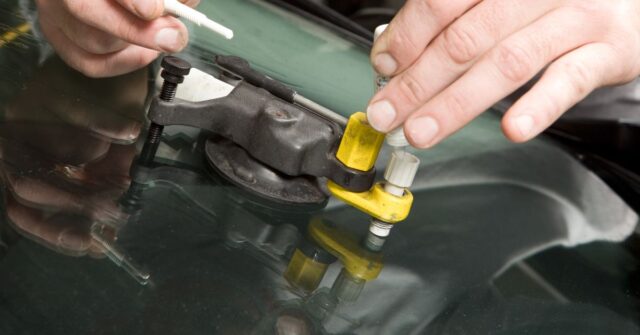Every component of your car plays a crucial role in your safety and comfort, and your windscreen is no exception.
It provides visibility and protection from the elements while contributing to the structural integrity of your vehicle.
In this comprehensive guide, we will delve into the essential aspects of windscreen maintenance, tailor-made for the Australian climate and driving conditions.
Understanding the Importance of Windscreen Maintenance
Maintaining your windscreen is not just about aesthetics. A clean, clear, and crack-free windscreen is crucial for your safety on the road.
It ensures unobstructed visibility, shields you from debris and harsh weather conditions, and also aids in the correct deployment of airbags in case of a collision.
Windscreen maintenance is hence a non-negotiable aspect of overall vehicle upkeep.
Common Windscreen Issues
Several issues can compromise the integrity and functionality of your windscreen. Understanding these problems can help you prevent them or seek timely repairs.
Windscreen Cracks and Chips
Cracks and chips are common windscreen problems, often caused by impacts from rocks or other debris on the road.
While minor chips can sometimes be repaired, larger cracks usually require a full windscreen replacement.
Windscreen Pitting
Over time, your windscreen may develop a multitude of tiny surface chips known as pits.
Pitting can cause visibility issues, especially when driving into the sun or at night when oncoming headlights can create a glaring effect.
Windscreen Fogging and Moisture Build-up
Condensation can cause your windscreen to fog up, reducing visibility.
This issue can be more pronounced in humid weather or when there are significant temperature differences inside and outside your vehicle.
The Australian Climate and Your Windscreen
Australia’s diverse climate, from scorching summers to chilly winters and stormy seasons, can have an impact on your windscreen’s condition. Here’s what you need to know.
Heat and Your Windscreen
Extreme heat, common in many parts of Australia, can cause your windscreen to expand. This can exacerbate existing cracks and chips or even cause new ones.
Cold and Your Windscreen
Conversely, cold temperatures can cause your windscreen to contract. If you use hot water to defrost your windscreen, it could result in thermal shock, leading to cracks.
Storm Damage and Your Windscreen
Storms, especially hailstorms, can cause significant windscreen damage. Parking your vehicle under cover during severe weather can help protect it.
Regular Windscreen Check-ups
Regularly inspecting your windscreen for any signs of damage is crucial. Look for any cracks, chips, or signs of pitting.
Also, check the condition of your windscreen wipers, as worn-out wipers can scratch your windscreen.
Preventive Measures for Windscreen Damage
While you can’t always avoid windscreen damage, certain preventive measures can minimise the risk.
Proper Cleaning Techniques
Using the right cleaning techniques can prevent scratches and other damage.
Always use a soft, microfibre cloth and a cleaning solution specifically designed for windscreens. Avoid abrasive materials and harsh chemicals.
Safe Driving Practices
Maintaining a safe distance from the vehicle in front of you can prevent debris from hitting your windscreen.
Also, avoid driving behind large trucks or vehicles carrying loose cargo that can fly off and strike your windscreen.
Using Windscreen Covers
Windscreen covers can protect your windscreen from heat and cold, reducing the risk of thermal stress. They can also shield your windscreen from hail or falling branches during a storm.
DIY Windscreen Maintenance
There are several steps you can take to maintain your windscreen at home, from cleaning to minor repairs.
Repairing Minor Cracks and Chips
DIY repair kits are available for fixing minor windscreen damage. These kits typically include a special resin that can be injected into the crack or chip.
However, remember that not all damage can be safely repaired at home. Always consult a professional if you’re unsure.
Replacing Wiper Blades
Worn-out wiper blades can scratch your windscreen and impede visibility during rain. Fortunately, replacing your wiper blades is a simple DIY task.
Make sure to choose the right size and type of blades for your vehicle.
Defogging the Windscreen
To defog your windscreen, you can use your vehicle’s defrost function. If the fogging persists, it might indicate a problem with your vehicle’s ventilation system and should be checked by a professional.
When to Seek Professional Help
While some windscreen maintenance tasks can be handled at home, certain issues require professional attention.
Recognising Serious Windscreen Damage
Large cracks, deep chips, or damage in the driver’s line of sight usually necessitate a windscreen replacement.
Additionally, if the damage affects the windscreen’s edges, it could compromise the structural integrity of the vehicle and should be inspected by a professional.
Choosing the Right Windscreen Repair and Replacement Service
When choosing a windscreen repair or replacement service, consider factors such as:
- The company’s reputation
- The quality of the materials they use
- Their warranty policy
- Whether they comply with Australian standards for windscreen repairs and replacements.
Understanding Windscreen Insurance Coverage in Australia
In Australia, most comprehensive car insurance policies cover windscreen damage. However, the details can vary between insurers.
It’s crucial to understand what your policy covers, whether there’s an excess for windscreen claims, and whether windscreen repairs or replacements will affect your no-claim bonus.
Windscreen Maintenance Myths Busted
There are many misconceptions about windscreen maintenance. For instance, some people believe that small chips or cracks don’t need to be repaired, or that windscreens can’t crack in cold weather.
However, this could not be further from the truth. Even the smaller chip should be repaired before it turns into a large crack that requires a full windscreen replacement.
Also extreme temperatures including both hot and cold can cause your windscreen to crack.
The worst time when this can happen is when there is a large change from one temperature to another in a very short amount of time.
Conclusion: Maintaining Your Windscreen for Safe Driving
Your windscreen plays a crucial role in your safety on the road.
By understanding the common windscreen issues, the impact of the Australian climate, and the preventive measures, you can ensure that your windscreen remains in good condition, providing you with clear visibility and a safer driving experience.





